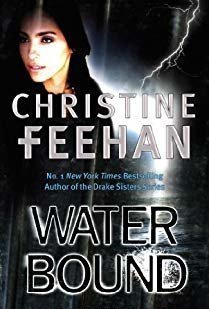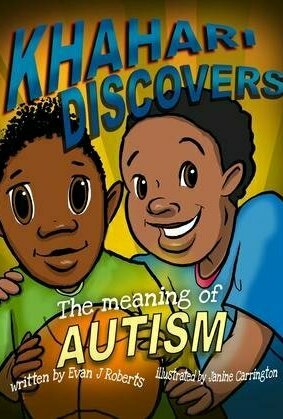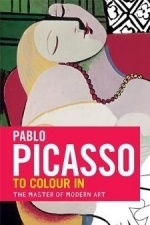
Christs, Redeemers by The Body
Album
It has been said by more than a few intrepid listeners that The Body is the most brutal band on the...
Sludge Metal Noise Drone

Speakly: Learn French, Spanish & more
Education
App
SPEAKLY is a powerful language learning tool to help you maximize your potential and guide you...
Rachel King (13 KP) rated Lion's Honey: The Myth of Samson in Books
Feb 11, 2019
As any person chosen of God to do His will, Samson is a man plagued by his destiny and how it separates him from the rest of humanity. Though chosen of God from the womb to live as a Nazarite, he is still very much human with human urges. Almost constantly at war with himself, Samson seems to set himself up to be hurt by those he puts his trust in so that he may let loose his anger and rage against those who hold his people captive -- the Philistines. Like so many modern-day psychological head cases, much of his choices are also driven by a need for that hidden something lacking in his relationship with his parents. He looks for it in the wrong places and the wrong women, even paying a visit to a prostitute. He seems to use his strength and anger with an artistic flair, first setting up a group of Philistines at his wedding with an unsolvable riddle, and later finding rather unique ways of further punishing the Philistines, such as using the jawbone of an ass to kill a thousand of them. Furthermore, every verbal account from Samson is spoken poetically.
What I found most interesting is the way that David Grossman explored the account of Samson and Delilah. He alludes that Samson in fact knew the betrayal that Delilah harbored and welcomed it in order to finally shed his God-given destiny. While he ends his life in a final act of redemption, I have to wonder if he did complete the task that God had given him to "begin to deliver Israel out of the hand of the Philistines."
Despite the intense detail that David Grossman goes into when writing this study of Samson, the book is a very good read and well worth my time.
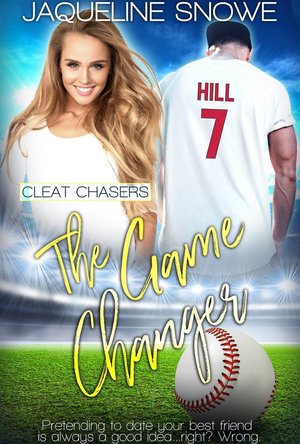
The Game Changer (The Cleat Chasers #2)
Book
Pretending to date your best friend is always a good idea…right? Wrong. Greta Aske has a lot on...
New Adult Contemporary Romance
Leanne Crabtree (480 KP) rated Water Bound (Sea Haven/Sisters of the Heart, #1) in Books
Jan 29, 2020
(I finally finished it!)
This one starts with Rikki waking from a nightmare - one she has regularly - regarding the fires that have chased her for a lot of her life. We learn more about those fires the more into the story we go. Anyway, Rikki is a sea urchin diver. She's out collecting them from a new location she's found when a giant wave knocks her around in the water and she sees someone being bashed around on the sea floor. She goes to their rescue and takes the man back to her boat where in his confusion he attacks her. Lev has no memory of who is he or what he was doing in the water but is grateful to the women who rescues him despite his initial reaction. Rikki takes him back to her house to nurse him back to health and feelings begin to stir between them as they try to figure out who he is and what happened that meant he ended up in the water.
This does contain more than what's mentioned above. There's Rikki's affinity with water, meaning she can manipulate it and it calms her when she's upset. There's also Lev's abilities - telepathy, advanced senses, his ability to map places in seconds. There's the Drake sisters - I read all those books a few years ago - who get mentioned and Rikki's adopted "sisters".
I think this is one of the first books I've read where the main character has some form of autism. Seeing some of the things that Rikki goes through with her sensitivity to sound and light, as well as some of the amazing things she dealt with like seeing the rain fall as some sort of symphony - it was an eye-opener.
I felt the story progressed a little too slowly for my liking. I was mostly interested in finding out who had been stalking Rikki and setting the fires and for Lev to successfully integrate into normal life and evade the bad guys who were trying to find and kill him. This definitely felt like a Paranormal Romantic Suspense if such a genre exists.
I'm not sure I'll be continuing the series.

Motivated Cognition in Relationships: The Pursuit of Belonging
Sandra L. Murray and John G. Holmes
Book
How can newlyweds believe they will be together forever, while knowing that the majority of...
Lindsay (1779 KP) rated Khahari Discovering the Meaning of Autism in Books
Jun 16, 2024
The boys decide they want to play. Kharhari goes out to play basketball with his friend Omari. When they do, Omari introduces Jayden to Khahari, and they start playing. However, a misunderstood happens when Jayden goes after the ball and takes it inside. Will Khahari and Omari play again, or will a misunderstanding get in the way?
When playing, misunderstandings happen. Things go awry. Will learning about something you do not know and trying to have fun help Khahari and Omari come to an understanding? Can they help teach Jayden how to share by taking turns and playing a game?
As the story unfolds, the children learn and understand each other. This book is about Khahari, Omari, and Jayden. It shows that children with autism are not so different in their desire to play. They just have a unique way of understanding. By asking questions and learning about themselves, your child can help educate all children. Khahari is learning about autism, and Jayden is learning about sharing and taking turns. And together, we're all learning about empathy and inclusivity.
Omari and Khahari, through their understanding of the challenges and struggles of autism, strengthen their friendship and help each other out. This is a lesson all children can benefit from. The author has made it simple and easy to understand and read, ensuring that the journey of learning is enjoyable for children. And the best part? The fun and learning don't end with the book. They continue in real life, where understanding and empathy can make a world of difference.
Hazel (1853 KP) rated Picasso: The Colouring Book in Books
Jul 15, 2017
...
Pablo Picasso: To Colour In was published in April 2016 with the intention of using the popular fad to educate readers/colouring book enthusiasts about the techniques and secrets of the great master. Each work included in the book has a brief paragraph explaining what it is (in case you cannot tell) and a few details about Picasso’s intentions or the events happening in his life at the time.
...
Naturally, it would be impossible to produce a book of all Picasso’s recorded works, but the editors of this particular colouring book have carefully selected examples that span the majority of his life, thus encompassing the different styles he experimented with.
The author of the text – presumably Frédérique Cassegrain, who also wrote the biography and information for each included artwork – gives helpful advice about how to colour in the outlined versions of Picasso’s paintings. The paper is thick enough to be suitable for paints, particular Gouache, which is water soluble and easily blended. Alternatively, coloured pencils may be used, preferably of artistic quality, which may be more suitable for those less confident in art and design. Another option, although not mentioned by the author, are felt-tip pens. Usually, these should be avoided due to ink bleeding through the page, however, the paper is single sided, so there is no chance of damaging the following colouring page in the book.
Purchasing Pablo Picasso: To Colour In and completing the book, provides not only hours of fun and relaxation, but an opportunity to discover and understand the artist. Unlike at a gallery where the brain may switch off, being able to go away and return to the book gives us time to absorb the information and concentrate more clearly on the details of each painting.
Opposite each colouring page is a copy of the original in full colour, meaning that, if one desired, one could replicate Picasso’s work as closely as possible. By doing, rather than just looking, we begin to understand the colour choices, piece together the geometric shapes to form an image and begin to understand the thought processes of the artist.
Interestingly, there are two paintings that stand out amongst all the others. These were produced during and after the First World War, a time when Picasso returned to a more classical style of artwork. These are The Pipes of Pan (1923) and The Bathers (1918). Both show a completely different side to Picasso and would not immediately be recognised as his own work. Despite not being entirely life-like, there are no elements of Cubism or Surrealism and the colour palette is altogether natural. Picasso has focused on shading and tone to create a realistic appearance, a contrast to the flattened portraits he is known for.
...
Pablo Picasso: To Colour In will appeal to artists, art historians and other creatives with its contrast of light relief and in-depth knowledge. The book is available online at retailers such as Amazon and The Book Depository from approximately £6. If Picasso is not your thing, there are other artists available in the series of colouring books, including Klimt, Hokusai (Japanese Art), Monet, Van Gogh, Caillebotte and Manet (Impressionists), and Paul Klee. Whatever your preference, prepare to learn whilst you are relaxing and having fun.
Hazel (1853 KP) rated Picasso: The Colouring Book in Books
Dec 7, 2018
...
<i>Pablo Picasso: To Colour In</i> was published in April 2016 with the intention of using the popular fad to educate readers/colouring book enthusiasts about the techniques and secrets of the great master. Each work included in the book has a brief paragraph explaining what it is (in case you cannot tell) and a few details about Picasso’s intentions or the events happening in his life at the time.
...
Naturally, it would be impossible to produce a book of all Picasso’s recorded works, but the editors of this particular colouring book have carefully selected examples that span the majority of his life, thus encompassing the different styles he experimented with.
The author of the text – presumably Frédérique Cassegrain, who also wrote the biography and information for each included artwork – gives helpful advice about how to colour in the outlined versions of Picasso’s paintings. The paper is thick enough to be suitable for paints, particular Gouache, which is water soluble and easily blended. Alternatively, coloured pencils may be used, preferably of artistic quality, which may be more suitable for those less confident in art and design. Another option, although not mentioned by the author, are felt-tip pens. Usually, these should be avoided due to ink bleeding through the page, however, the paper is single sided, so there is no chance of damaging the following colouring page in the book.
Purchasing Pablo Picasso: To Colour In and completing the book, provides not only hours of fun and relaxation, but an opportunity to discover and understand the artist. Unlike at a gallery where the brain may switch off, being able to go away and return to the book gives us time to absorb the information and concentrate more clearly on the details of each painting.
Opposite each colouring page is a copy of the original in full colour, meaning that, if one desired, one could replicate Picasso’s work as closely as possible. By doing, rather than just looking, we begin to understand the colour choices, piece together the geometric shapes to form an image and begin to understand the thought processes of the artist.
Interestingly, there are two paintings that stand out amongst all the others. These were produced during and after the First World War, a time when Picasso returned to a more classical style of artwork. These are The Pipes of Pan (1923) and The Bathers (1918). Both show a completely different side to Picasso and would not immediately be recognised as his own work. Despite not being entirely life-like, there are no elements of Cubism or Surrealism and the colour palette is altogether natural. Picasso has focused on shading and tone to create a realistic appearance, a contrast to the flattened portraits he is known for.
...
Pablo Picasso: To Colour In will appeal to artists, art historians and other creatives with its contrast of light relief and in-depth knowledge. The book is available online at retailers such as Amazon and The Book Depository from approximately £6. If Picasso is not your thing, there are other artists available in the series of colouring books, including Klimt, Hokusai (Japanese Art), Monet, Van Gogh, Caillebotte and Manet (Impressionists), and Paul Klee. Whatever your preference, prepare to learn whilst you are relaxing and having fun.
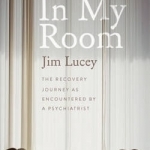
In My Room: The Human Journey as Encountered by a Psychiatrist
Book
'The room is a space for the mind, and a metaphor for the mind at the same time. Most of us will...

